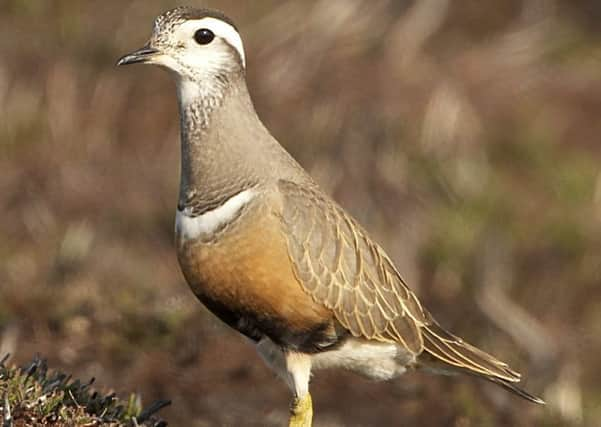Birdwatch: Party time for pretty species headed for remote mountains


A group of up to 12 has been on Danby Beacon on the North York Moors last week and this - a regular calling off point for these beautiful birds with their chestnut underparts, bright white eyestripes and dark cap.
Some of these traditional stopping-off points have been used for many generations and, as well as moors and hills, can also be in flat arable fields in lowland.
Advertisement
Hide AdAdvertisement
Hide AdA group of 28 dotterels have been in a ploughed field at Choseley Barns, Norfolk and dotterels often also used to stop off in the pea fields around Swinefleet near Goole, although in recent years this has become much less regular.
Dotterels are unusual in two respects. Although classed as a wader, they do not spend any time on shorelines or marshes but instead prefer the highest mountain plateaux.
Also the female is the most brightly coloured and initiates the courtship. Once she has laid a clutch of eggs she leaves the male to incubate them and rear the young on his own. She often moves elsewhere, finds another mate, and repeats the process.
Dotterels were once more numerous and widespread than they are now but were hunted both for their meat and feathers which fishermen used to make trout flies and by egg collectors and taxidermists. Place names across Britain show where the hunters once gathered – one of these is the Dotterel Inn on the outskirts of Filey.
Advertisement
Hide AdAdvertisement
Hide AdFor birders going to see the dotterels on Danby Beacon there was plenty more of interest nearby on Teesside.
Birds on the Saltholme RSPB reserve included two adult whiskered terns, five spoonbills ringed in Germany, and a great reed warbler singing at the Haverton Hole allotment pool.
A grey headed wagtail was seen on Seaton Common and there were excellent views of a red-spotted bluethroat on a bowling green at Hartlepool Headland. Other bluethroats were seen at Staithes and Flamborough.
There were also several red-backed shrikes along the east coast, at Robin Hood’s Bay, a female at Ravenscar, a male and female at Kilnsea and a female trapped and ringed at Spurn. A male was also reported inland at the weekend on Thorne Moors near Doncaster.
Advertisement
Hide AdAdvertisement
Hide AdA female Sardinian warbler was seen along the canal at Kilnsea on Monday afternoon, the last record in Yorkshire was at Filey in 1993.
Other rarities included a thrush nightingale at Sammy’s Point and a hoopoe and a nightjar both at Out Newton.
Turtle doves have been calling at several places across the region including Sutton Bank, North Yorkshire and Thorne Moors.
A spoonbill has been seen on the moat at the Fairburn Ings reserve while five pairs of little egrets are nesting there.
The first summer drake surf scoter is still in Filey Bay, five months after it was first seen on December 15.